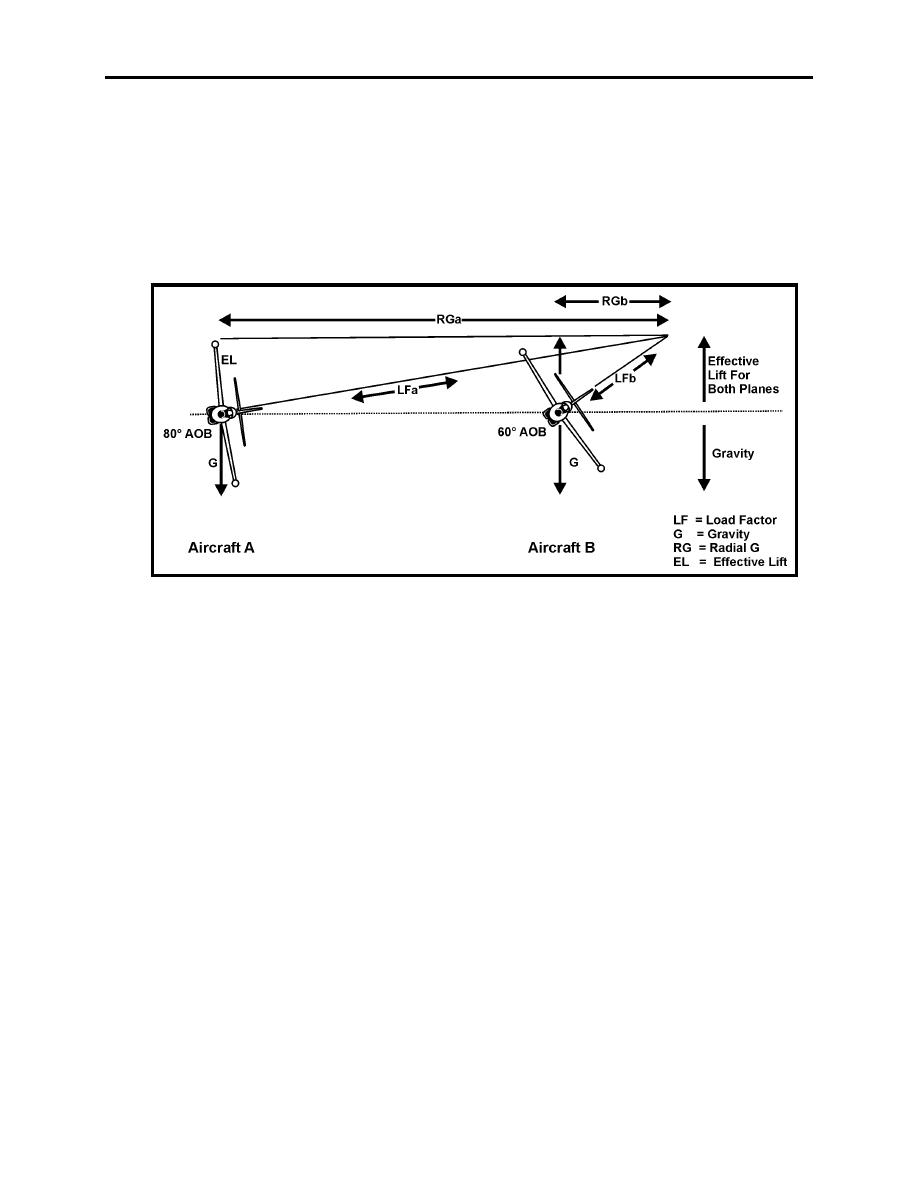 |
|||
|
|
|||
|
Page Title:
Figure 9-3 Horizontal Maneuvering |
|
||
| ||||||||||
|
|  CHAPTER NINE
BASIC FIGHTER MANEUVERING (BFM) THEORY
referred to as "radial G", actually turns the aircraft. Radial g is the horizontal component of lift.
If you pull harder in a turn, which is indicated on your accelerometer and referred to as
"indicated g", you are increasing the load factor. Depending on your situation (your snapshot in
time), this triangle will change. Simply put, the larger the radial g vector, the better the turn
performance. As you see in Figure 9-3, in a purely horizontal turn, the greater the AOB, the
greater the load factor to maintain effective lift. This greater load factor produces greater
induced drag, resulting in a higher energy loss.
Figure 9-3 Horizontal Maneuvering
911. VERTICAL MANEUVERING
Figure 9-4 represents another theoretical loop in the vertical plane at constant TAS and constant
indicated G. This figure isolates pure vertical maneuvering within the "tactical egg". Unlike a
purely horizontal turn, your turn performance in a vertical turn is affected differently by gravity,
depending upon where you are in the turn.
When the aircraft lift vector is above the horizon (at the bottom of the egg), radial g decreases
because gravity opposes the load factor of the aircraft, resulting in a larger turn radius and a
lower turn rate. When the lift vector is below the horizon (at the top of the egg, when the fighter
is inverted), radial G increases because gravity assists the load factor and lift, resulting in a
smaller turn radius and faster turn rate. When the aircraft is pure vertical (side of the egg), the
load factor is parallel to the horizon and therefore equal to radial G, which results in an
intermediate turn performance.
9-6
BASIC FIGHTER MANEUVERING (BFM) THEORY
|
|
Privacy Statement - Press Release - Copyright Information. - Contact Us |